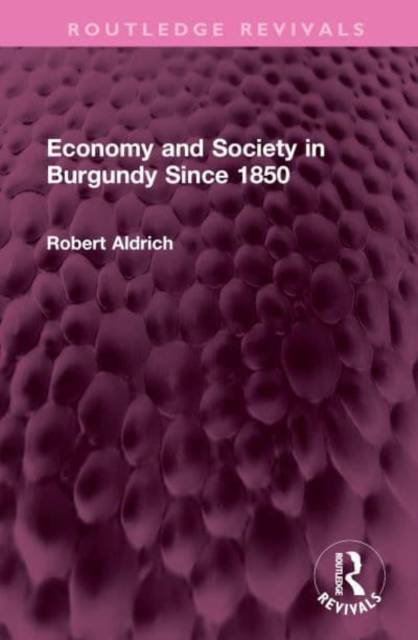
- Retrait gratuit dans votre magasin Club
- 7.000.000 titres dans notre catalogue
- Payer en toute sécurité
- Toujours un magasin près de chez vous
- Retrait gratuit dans votre magasin Club
- 7.000.0000 titres dans notre catalogue
- Payer en toute sécurité
- Toujours un magasin près de chez vous
Description
First Published in 1984 Economy and Society in Burgundy Since 1850 provides a comprehensive overview of the modern history of Burgundy. Burgundy is best known for its wine and its capital of Dijon is most often associated with mustard. Yet the region's modern history is more than a history of gastronomy. The coming of the railways in the 1850s greatly changed the economic life of the area, spurring the growth of Dijon and contributing to rural depopulation. Agricultural crises throughout the nineteenth century, such as phylloxera epidemic in the vineyards, caused further dislocation in rural life. Even in the twentieth century, the countryside remained agricultural while the city of Dijon owes its dynamism to the expansion of the service sector rather than to heavy industry. This book argues that this evolution -modernisation without industrialization- is not a matter of economic retardation but of the suitability of the region's natural resources and the intentional choice of its population. Rich in archival sources this book is an interesting read for scholars and researchers of French history, European history, and modern history.
Spécifications
Parties prenantes
- Auteur(s) :
- Editeur:
Contenu
- Nombre de pages :
- 256
- Langue:
- Anglais
- Collection :
Caractéristiques
- EAN:
- 9781032405643
- Date de parution :
- 20-01-23
- Format:
- Livre relié
- Format numérique:
- Genaaid
- Dimensions :
- 156 mm x 233 mm
- Poids :
- 539 g

Les avis
Nous publions uniquement les avis qui respectent les conditions requises. Consultez nos conditions pour les avis.






